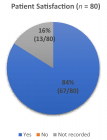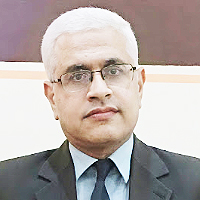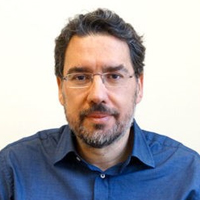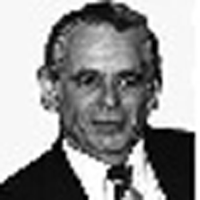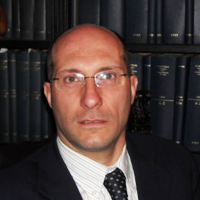Abstract
Review Article
Betty Neuman System Model: A Concept Analysis
Adnan Yaqoob*, Rafat Jan and Salma Rattani and Santosh Kumar
Published: 04 August, 2023 | Volume 7 - Issue 1 | Pages: 011-015
Introduction: Nursing theories are critical as they drive nursing education, practice, and research. Neuman Systems Model (NSM) considers a person a complete system with integrated psychological, physiological, spiritual, social, and developmental components. Nurses give their patients physical, emotional, and psychological assistance and are subjected to mental and physical pressure due to these responsibilities, impacting their health, psychological well-being, and interpersonal relationships. This paper aims to perform a concept analysis of stressors proposed in NSM about lines of defense and the level of preventive interventions that can affect a person’s well-being. Further, this paper discusses knowledge generation through NSM’s applicability to preventing exhaustion and burnout among nurses.
Methodology: This theoretical attempt is carried out using the theory analysis approach suggested by Walker and Avant (2019).
Discussion: Nursing is a career that requires a great deal of dedication and personal engagement. Nurses are subjected to recurrent stresses due to technological advances and rising demands. Burnout occurs when nurses get discouraged and have less compassion for the patients due to recurrent burdens. Stress and burnout are two of the most common reasons for nurses to quit hospitals. The NSM is concerned with stresses that may affect a person’s health and well-being (prediction). Nurses assist patients at the most vulnerable and challenging times, such as surgical procedures, traumas and personal and physical losses.
Conclusion: The NSM enables the investigation of preventative and protective treatments. Because of the model’s flexibility, it may be used in a wide range of nursing situations. Administrative, hospitals, clinics, and other nurses can benefit from this paradigm. Evaluating the many distinct elements contributing to burnout is also feasible. The model’s client factors of physiological, sociocultural, developmental, and spiritual characteristics are used to achieve this. Viewing the individual as an open system that responds to environmental stimuli encourages the existence of stressors that might lead to burnout.
Read Full Article HTML DOI: 10.29328/journal.ida.1001036 Cite this Article Read Full Article PDF
Keywords:
Application of NSM; NSM Concept Analysis; Walker & Avant; Knowledge Generation
References
- Smith MC, Parker ME. Nursing theories & nursing practice (Fourth edition.). Philadelphia, PA: FA Davis Company. 2015.
- Petiprin A. Systems Theory. 2016. Retrieved May 15, 2019. http://www.nursing- org/theories-and-models/neuman-systems-model.php
- Gonzalo A. Betty Neuman. 2011. Retrieved May 16, 2019. https://nursingtheories. weebly .com/betty-neuman.html
- Reed KS. Betty Neuman: The Neuman systems model. Newbury Park, Calif: Sage Publications. 1993.
- Meleis AI. Theoretical nursing: Development and progress (5th ed.). Philadelphia: Lippincott. 2012.
- Walker LO, Avant KC. Strategies for theory construction in nursing. 6th ed. New York (US): Pearson. 2019.
- Neuman B, Fawcett J.The Neuman systems model (5th ed.). Upper Saddle River, NJ: Pearson.
- Tierney MJ, Lavelle M. An investigation into modification of personality hardiness in staff nurses. J Nurs Staff Dev. 1997 Jul-Aug;13(4):212-7. PMID: 9287629.
- Oehler JM, Davidson MG, Starr LE, Lee DA. Burnout, job stress, anxiety, and perceived social support in neonatal nurses. Heart Lung. 1991 Sep;20(5 Pt 1):500-5. PMID: 1894530.
- Drucker PF. The new productivity challenge. Harv Bus Rev. 1991 Nov-Dec;69(6):69-9. PMID: 10114929.
- Kobasa SC. Stressful life events, personality, and health: an inquiry into hardiness. J Pers Soc Psychol. 1979 Jan;37(1):1-11. doi: 10.1037//0022-3514.37.1.1. PMID: 458548.
- Collins MA. The relation of work stress, hardiness, and burnout among full-time hospital staff nurses. J Nurs Staff Dev. 1996 Mar-Apr;12(2):81-5. PMID: 8715623.
- Tartasky DS. Hardiness: conceptual and methodological issues. Image J Nurs Sch. 1993 Fall;25(3):225-9. doi: 10.1111/j.1547-5069.1993.tb00786.x. PMID: 8225356.
- Boyle A, Grap MJ, Younger J, Thornby D. Personality hardiness, ways of coping, social support and burnout in critical care nurses. J Adv Nurs. 1991 Jul;16(7):850-7. doi: 10.1111/j.1365-2648.1991.tb01767.x. PMID: 1918650.
- Sortet JP, Banks SR. Hardiness, job stress, and health in nurses. Hosp Top. 1996 Spring;74(2):28-33. doi: 10.1080/00185868.1996.11736054. PMID: 10158721.
- Stechmiller JK, Yarandi HN. Predictors of burnout in critical care nurses. Heart Lung. 1993 Nov-Dec;22(6):534-41. PMID: 8288457.
- Fawcett J. Analysis and evaluation of nursing theories. Philadelphia: F. A. Davis Company. 1993.
- Pajnkihar M, McKenna HP, Štiglic G, Vrbnjak D. Fit for Practice: Analysis and Evaluation of Watson's Theory of Human Caring. Nurs Sci Q. 2017 Jul;30(3):243-252. doi: 10.1177/0894318417708409. PMID: 28899271.
- Sutton J, Austin Z. Qualitative Research: Data Collection, Analysis, and Management. Can J Hosp Pharm. 2015 May-Jun;68(3):226-31. doi: 10.4212/cjhp.v68i3.1456. PMID: 26157184; PMCID: PMC4485510.
- Reeves S, Kuper A, Hodges BD. Qualitative research methodologies: ethnography. BMJ. 2008 Aug 7;337:a1020. doi: 10.1136/bmj.a1020. PMID: 18687725.
- Kawulich B. Forum: Qualitative Social Research. Participant Observation as a Data Collection Method. 2005; 6(2).
- McElroy AM. Burnout--a review of the literature with application to cancer nursing. Cancer Nurs. 1982 Jun;5(3):211-7. PMID: 6919458.
- Simoni PS, Paterson JJ. Hardiness, coping, and burnout in the nursing workplace. J Prof Nurs. 1997 May-Jun;13(3):178-85. doi: 10.1016/s8755-7223(97)80069-5. PMID: 9167407.
Figures:
Similar Articles
-
Betty Neuman System Model: A Concept AnalysisAdnan Yaqoob*, Rafat Jan, Salma Rattani and Santosh Kumar. Betty Neuman System Model: A Concept Analysis. . 2023 doi: 10.29328/journal.ida.1001036; 7: 011-015
Recently Viewed
-
Maternal and perinatal outcomes of uterine rupture in Lubumbashi, Democratic Republic of CongoJacques Ngoy Kitenge,Olivier Mukuku*,Xavier K Kinenkinda,Prosper L Kakudji. Maternal and perinatal outcomes of uterine rupture in Lubumbashi, Democratic Republic of Congo. Clin J Obstet Gynecol. 2020: doi: 10.29328/journal.cjog.1001067; 3: 136-141
-
Do Fishes Hallucinate Human Folks?Dinesh R*,Sherry Abraham,Kathiresan K,Susitharan V,Jeyapavithran C,Paul Nathaniel T,Siva Ganesh P. Do Fishes Hallucinate Human Folks?. Arch Food Nutr Sci. 2017: doi: 10.29328/journal.afns.1001003; 1: 020-023
-
Assessment of Redox Patterns at the Transcriptional and Systemic Levels in Newly Diagnosed Acute LeukemiaAna Carolina Agüero Aguilera, María Eugenia Mónaco, Sandra Lazarte, Emilse Ledesma Achem, Natalia Sofía Álvarez Asensio, Magdalena María Terán, Blanca Alicia Issé, Marcela Medina, Cecilia Haro*. Assessment of Redox Patterns at the Transcriptional and Systemic Levels in Newly Diagnosed Acute Leukemia. J Hematol Clin Res. 2024: doi: 10.29328/journal.jhcr.1001029; 8: 017-023
-
Assessment of Indigenous Knowledge on Using of Traditional Medicinal Plants to Cure Human Diseases in South Omo Zone Baka Dawla Ari District, Kure and Bitsmal South EthiopiaGizaw Bejigo*. Assessment of Indigenous Knowledge on Using of Traditional Medicinal Plants to Cure Human Diseases in South Omo Zone Baka Dawla Ari District, Kure and Bitsmal South Ethiopia. J Plant Sci Phytopathol. 2024: doi: 10.29328/journal.jpsp.1001132; 8: 048-054
-
Nanoencapsulated Extracts from Leaves of Bauhinia forficata Link: In vitro Antioxidant, Toxicogenetic, and Hypoglycemic Activity Effects in Streptozotocin-induced Diabetic MiceBárbara Verônica Cardoso de Souza, Alessandra Braga Ribeiro*, Rita de Cássia Meneses Oliveira, Julianne Viana Freire Portela, Ana Amélia de Carvalho Melo Cavalcante, Esmeralda Maria Lustosa Barros, Luís Felipe Lima Matos, Tarsia Giabardo Alves, Maria. Nanoencapsulated Extracts from Leaves of Bauhinia forficata Link: In vitro Antioxidant, Toxicogenetic, and Hypoglycemic Activity Effects in Streptozotocin-induced Diabetic Mice. Arch Pharm Pharma Sci. 2024: doi: 10.29328/journal.apps.1001063; 8: 100-115
Most Viewed
-
Evaluation of Biostimulants Based on Recovered Protein Hydrolysates from Animal By-products as Plant Growth EnhancersH Pérez-Aguilar*, M Lacruz-Asaro, F Arán-Ais. Evaluation of Biostimulants Based on Recovered Protein Hydrolysates from Animal By-products as Plant Growth Enhancers. J Plant Sci Phytopathol. 2023 doi: 10.29328/journal.jpsp.1001104; 7: 042-047
-
Sinonasal Myxoma Extending into the Orbit in a 4-Year Old: A Case PresentationJulian A Purrinos*, Ramzi Younis. Sinonasal Myxoma Extending into the Orbit in a 4-Year Old: A Case Presentation. Arch Case Rep. 2024 doi: 10.29328/journal.acr.1001099; 8: 075-077
-
Feasibility study of magnetic sensing for detecting single-neuron action potentialsDenis Tonini,Kai Wu,Renata Saha,Jian-Ping Wang*. Feasibility study of magnetic sensing for detecting single-neuron action potentials. Ann Biomed Sci Eng. 2022 doi: 10.29328/journal.abse.1001018; 6: 019-029
-
Pediatric Dysgerminoma: Unveiling a Rare Ovarian TumorFaten Limaiem*, Khalil Saffar, Ahmed Halouani. Pediatric Dysgerminoma: Unveiling a Rare Ovarian Tumor. Arch Case Rep. 2024 doi: 10.29328/journal.acr.1001087; 8: 010-013
-
Physical activity can change the physiological and psychological circumstances during COVID-19 pandemic: A narrative reviewKhashayar Maroufi*. Physical activity can change the physiological and psychological circumstances during COVID-19 pandemic: A narrative review. J Sports Med Ther. 2021 doi: 10.29328/journal.jsmt.1001051; 6: 001-007

HSPI: We're glad you're here. Please click "create a new Query" if you are a new visitor to our website and need further information from us.
If you are already a member of our network and need to keep track of any developments regarding a question you have already submitted, click "take me to my Query."







